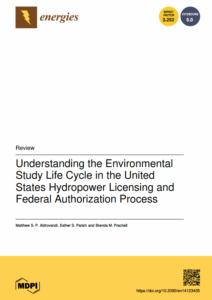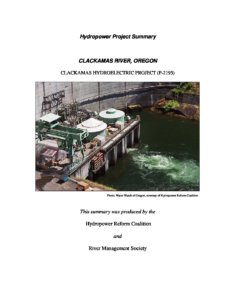Mid-Atlantic and Northeast Climate Change Solutions That Actually Work

The threats posed by climate change—including stronger and more frequent storms, habitat loss, sea level rise, and an uptick in climate refugees—will permanently alter the future of our planet. Climatologists agree: decisive and bold action is necessary to minimize global warming and mitigate its most dire consequences.
The climate change public policies and actions for which AMC advocates coincide are consistent with the organization’s mission and strengths and are part of how AMC is making a meaningful contribution in our region, say AMC conservation staff. Coinciding with AMC’s own goal for net zero carbon neutrality emissions by no later than 2050, here are the climate change solutions AMC scientists say offer the best hope for mitigating the effects of a warming planet—adapted from the recently updated AMC climate and energy and climate policies plan, which was approved by AMC’s Board of Directors in April. AMC’s Mid-Atlantic and Northeast climate change solutions begin with a clear set of Guiding Principles:
- Reduce greenhouse gas emissions.
- Set net zero climate targets and develop roadmaps.
- Promote transparency in tracking and reporting.
- Support carbon offsets and carbon sequestration technologies.
- Avoid unnecessary impacts with best available practices and technology.
- Mitigate for unavoidable resource impacts.
- Develop decommissioning plans.
- Conduct a transparent and robust stakeholder engagement process.
- Ensure equity and environmental justice.

Greenhouse Gas Reduction Incentives
The current climate crisis has arisen in large part because the costs of emitting greenhouse gases are not factored into our financial and economic systems. With a few exceptions, there is no cost for emitting greenhouse gases and no benefits for reducing emissions. While regulatory requirements are appropriate in many areas, market-based incentives that change the economic calculus regarding emissions are also necessary. To put it simply, we need to make it more expensive to emit carbon to the atmosphere and financially beneficial to reduce these emissions. AMC supports both regulatory and market-based approaches to achieve this while adhering to our guiding principles stated above.
State and federal renewable portfolio standards are one effective tool. These standards require that a portion of the electricity utilities sell come from renewable sources. They should seek to achieve net zero carbon emissions by 2050 and should be based on realistic assessments of what may be achieved without undue impact on the region’s natural and recreational resource base, as well as undue impact ofn marginalized communities. This requires a comprehensive understanding and assessment of the role of energy conservation and efficiency, demand response, carbon sequestration, and other mitigation tools as a complement to a renewable portfolio standard that can be used to meet established climate targets. A focus on energy production (even from renewable sources) over conservation and efficiency can lead to energy generation goals that drive major and unnecessary impacts to important natural or recreational resources, particularly those of recognized state, regional, or national significance (including Indigenous lands). Renewable energy sources that rely heavily on the alteration of natural systems, such as hydropower and biomass, should only qualify for the renewable portfolio standards if they meet rigorous criteria to protect the functioning of the natural systems. Energy development and associated transmission expansion—like the proposed New England Clean Energy Connect project, which AMC opposes—should occur on human dominated landscapes and features, rather than introducing new or expanded development to the region’s ever-shrinking natural landscapes.
“Cap and trade” or “cap and invest” programs set a limit (or a cap) on carbon emissions and asks emitters to purchase allowances for every ton of carbon emitted under the cap. Emitters may also invest those allowances in clean energy projects and transportation programs that encourage reducing emissions. These programs are generally appropriate at the regional and national level for reducing air pollution and greenhouse gases; however, these programs must be designed, implemented, and monitored to ensure environmental targets are met, and that Black, Brown, Indigenous, low-income, or otherwise marginalized communities benefit. More specifically, programs like the Regional Greenhouse Gas Initiative and the developing Transportation and Climate Initiative include features such as investment of proceeds to further achieve environmental goals and address social inequities and health disparities in marginalized communities, periodic reviews, and cost containment and emission containment reserves.
Carbon pricing is, according to the World Bank, “an instrument that captures the external costs of greenhouse gas (GHG) emissions—the costs of emissions that the public pays for, such as damage to crops, health care costs from heat waves and droughts, and loss of property from flooding and sea level rise—and ties them to their sources through a price, usually in the form of a price on the carbon dioxide (CO2) emitted.” AMC scientists contend that carbon pricing must be paired with science-based reduction targets and timelines to ensure that environmental goals are achieved and drive the market towards rewarding a net-zero carbon economy. New legislative initiatives should not subvert or remove Clean Air Act authority to control greenhouse gas emissions but should be additive and complementary. Tax- and market-based strategies should reward consumer choices of energy conservation and efficiency, lower emission fuels, and low impact energy sources.
Clean energy standards are the most effective way to meet carbon reduction targets in the electricity sector and achieve net-zero by 2050—especially at the national level. Clean energy standards require suppliers of electricity to hold credits earned though the production of clean energy. A properly structured clean energy standard will provide full credit value for sources of energy that are truly zero-emitting, will grant partial credit based on the emissions profile of energy sources that emit carbon, and will have escalation terms to increase the clean energy used until it accounts for 100 percent of the electricity supplied. This approach ensures that, over time, zero carbon emitting sources become lower cost options over carbon emitting sources. A clean energy standard is differentiated from a renewable portfolio standard approach by more broadly defining clean electricity as more than just renewables, such as nuclear power, carbon emitting generation coupled with carbon capture technology, and energy efficiency. A clean energy standard also allows market-based credit trading, leading to lower-cost compliance and perhaps complementing other federal and state clean energy programs.
Carbon offset programs are an efficient way to allocate greenhouse gas reductions, and which provide a financial benefit to those who take “carbon-friendly” actions that would not otherwise have occurred. Some types of offset projects (particularly forest projects, like AMC’s initiatives in the Maine Woods) also provide a range of environmental co-benefits including wildlife habitat and watershed protection. To be credible, offset projects must be developed under recognized protocols that meet internationally accepted standards for additionality, leakage, permanence, and verification. Offsets should not be used as a substitute for real emissions reductions but should be the last step to balance emissions that cannot be realistically reduced due to economic or technological limitations.

Natural Climate Solutions
“Natural climate solutions” are approaches that utilize the natural process of photosynthesis to increase the storage of carbon as organic matter in the vegetation and soils of forests, wetlands, and agricultural lands. According to the U.S. Forest Service, forests nationwide are a net carbon “sink,” and sequestration in forests offsets 10 to 20 percent of U.S. fossil fuel emissions each year. In our region, forests are our best natural climate solution and have the potential for large amounts of additional carbon storage. These forests must continue to serve as a carbon sink and not become a source of additional carbon to the atmosphere. AMC supports the following policies and programs with this goal:
- Land conservation funding programs that keep forests as forest and avoid the loss of stored carbon due to clearing and development.
- Management plans and policies for public lands that put a high priority on maintaining and increasing carbon storage.
- The establishment of no-harvest reserves that allow for carbon storage to be maximized.
- Working forest conservation easements that include a requirement that the level of carbon storage does not decline.
- State regulations that limit large-scale forest clearing.
- Financial incentive programs (including but not limited to carbon offsets) that provide a financial benefit to private landowners for maintaining and increasing carbon storage on their land.

Individual Actions
The adjustments individuals and families make to their lives and routines, when multiplied over millions of households, can make a big difference in the fight against climate change. These include habits like recycling, reducing the use of single-use plastics, and conserving energy at home, but practices that reduce food waste (which produces methane as it rots in landfills), eating food from sustainable sources (industrial agriculture plays an outsized role in carbon emissions and land degradation), and offsetting one’s own carbon emissions also make an impact.
Collectively, it’s going to take every one of us doing our own part—as well as bold action from governments and corporations—to address the existential crisis of our time. But take heart: change is possible.
LEARN MORE:
- Read more about AMC’s work for cleaner energy and energy efficiency.
- Join AMC’s Conservation Action Network to get updates on how you can fight climate change.
- Know the difference between climate and weather, the causes of climate change, and its effects.
- Achieve zero waste at home by following the example AMC’s high huts are setting.
The post Mid-Atlantic and Northeast Climate Change Solutions That Actually Work appeared first on Appalachian Mountain Club.


